Ep. 19 – Animals in the Great War – Lucinda Moore
- Home
- The Latest WWI Podcast
- Ep. 19 – Animals in the Great War – Lucinda Moore
Lucinda Moore, a picture researcher at the Mary Evans Picture Library, discusses her new book Animals in the Great War with Tom Thorpe.
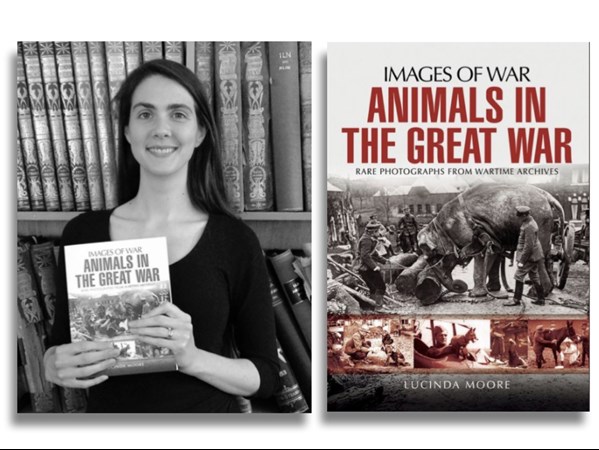
Transcript
Dr Tom Thorpe [TT]: In this week's episode we examine the role of animals in the Great War. Lucinda Moore has written a new book on the subject based on rare photographs from the Mary Evans Picture Library where she is a picture researcher. Her book has been published by Pen and Sword. When I spoke to Lucinda about it, I started our conversation by asking her what role did animals play in the war.
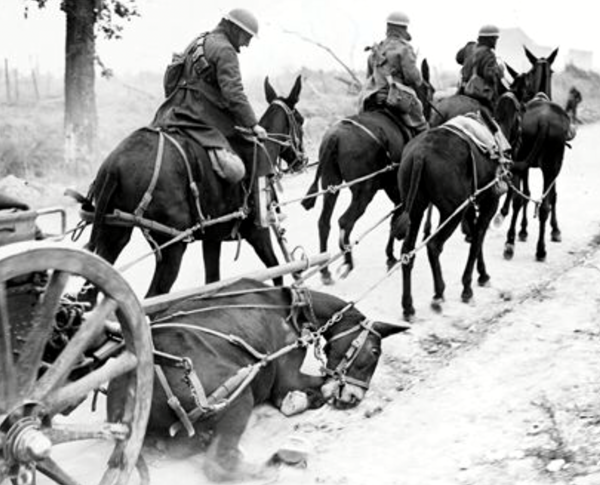
Lucinda Moore [LM]: Well, and animals were absolutely crucial in the Great War. They had such a wide range of roles that were - essential really, especially in terms of transportation. So for example, the role of the war horses is quite well known, thanks to Michael Morpurgo’s book - and following the screenplay - but also mules and even dogs were used in terms of transporting munitions to the front line. So, there were dogs pulling machine gun carriers, and that kind of thing.
Communication - animals were used as carrier pigeons and even messenger dogs - and even on a very basic level, roles such as pest control. So, animals being used for ratting - so, ferrets and dogs.
Food as well is quite a big one, bully beef and eggs in the trenches; soldiers having small chicken runs and that kind of thing.
So even though perhaps you think of animals as being a source of companionship as well and having psychological benefits like that, really, at the base of it, things like food, transport and communication were absolutely essential.
TT: So Lucinda, why did you come to write a book on animals in the Great War?
LM: The inspiration behind the book was the the Mary Evans blog ‘Picturing the Great War', which we started to tie in, with the the centenary - and the idea behind the blog was to have a focal point for some of the amazing stories that we were coming across quite frequently in the archive relating to the Great War, as a contributor to that blog. And the animal stories that started catching my eye. And my, my colleague, Luci Gosling, who's a prolific author and his written herself for a lot of magazines, as well as her own books, suggested that I might like to start collating material using the blog as a springboard - looking at our animal and ‘other creature’ related pictures from from that era.
[03:11] TT: So where were these stories presented? Were they in magazines, like the London Illustrated News and the Daily Graphic?
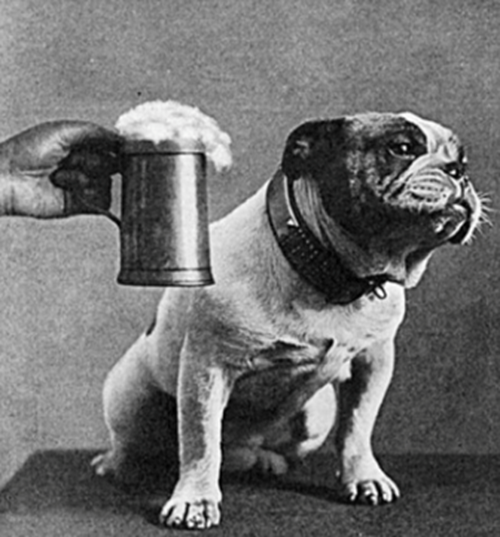
LM: Those sort of publications, that's right. So we're very lucky here at Mary Evans Picture Library, in that, we represent the Illustrated London News Group’s collection of illustrated papers, which includes the Illustrated London News and The Graphic, but also among other publications that were around at the time, like The Tatler, which had a more of a society look at the war, but also animals featured quite prominently as part of that.
We've also got material from the lifetimes collection of Mary Evans herself, which involves lots of other books that aren't necessarily the weekly published periodicals, as well as things like them postcards and other ephemera which with Mary Evans, being very interested in animal rights and a very, very big fan of dogs in particular - so we have quite a strong collection there partly as a result of her own interest in this area.
[4:11] TT: So what sort of stories … emerge from these publications during the Great War. How are our animals portrayed?
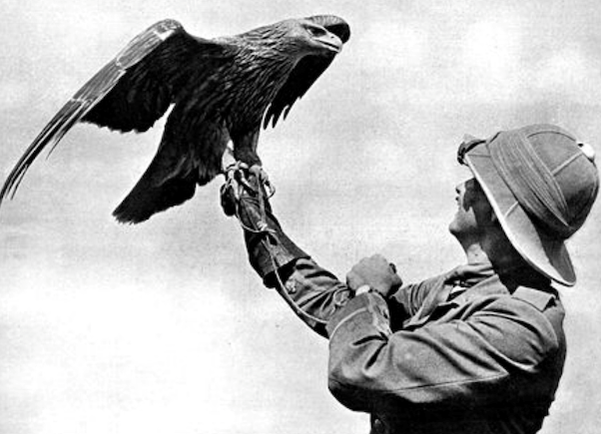
LM: Generally in very positive terms. So, one thing that I found quite surprising is there's a global conflict taking place, you’d think animal interest stories would be … perhaps be disregarded by the Press, but actually they cropped up quite a lot in terms of boosting morale, and just having a couple of different perspectives that for us in the 21st century, looking back at the war. Even things like - this is a slightly off the wall example, but the Illustrated London News ran a feature about how whales were affected by the war - as the sea creatures, they were the unwitting targets of bombs because from the air a whale looks very much like a U-Boat. And there were incidents of whales being washed up on our shores with these mine or an aerial bomb related wounds. And so that's an example of how a publication like The Illustrated London News, would have taken a story relating to a creature and, and it was featured in their publication. But you think of the First World War you don't necessarily think it's going to affect sea creatures.
[5:42] TT: It's really interesting. And obviously, there probably could be a lot of stories from the trenches. What themes do these ones discuss ?
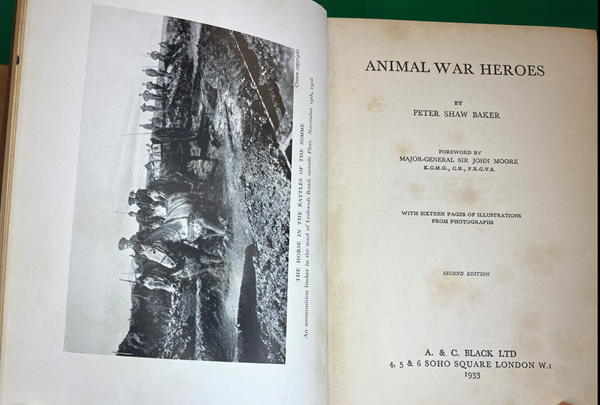
LM: There's an interesting … book that I'm, I discovered in the archive called ‘Animal War Heroes’, which focuses more on life in the trenches and it was quite gripping stuff about how the individual soldiers related to animals that they had perhaps adopted or became regimental mascots. In some cases, even going to save the lives of the soldiers, through their actions. So for example, geese were adopted, rather surprisingly as mascot, but they could also act as … not an early warning system but almost as then they would make a frightful noise if unknown people were approaching the area that they were.
[6:39] TT: So how did animals help soldiers cope with the stress and trauma of the trenches?
LM: Today we are quite familiar with the idea of pets as therapy. Often in hospitals today, you might see someone walking around with a dog, with their little bandanas on with that message on - as an idea to help people who are convalescing or recovering. Certainly in the images that I've seen from the archive and in the publications we have here at the library, animals do seem to be a very powerful source of comfort and companionship.
There’s a beautiful picture that features in the book of a soldier caressing the head of a dog in a really dismal looking trench. Just the contrast of that about companionship and relationship to the very dire settings that man and dog found themselves in.
[7:30] TT: One of the themes that emerges from a lot of memoirs, is that the sight of dead animals caused by soldiers as opposed to the the sights of death and maiming of human beings. Is that theme at all picked up in your research?
LM: There’s certainly a marked contrast between the carnage and chaos of the front lines and the length, that say soldiers would go to to protect and care for animals that came under their care. So for example, there was a report of a lieutenant who found a family of kittens whose mother had been killed during - I think that was the bombardment and the mother was dead. And there are some very, very young kittens that were left, completely abandoned and he fed them individually through a straw using, I think it was condensed milk to try and bring these kittens - to stop them from starving to death and all all bar one of them died in the end, but the cat that lived, Patchouli was its name - became a stalwart companion. But you do think … you're in the midst of a conflict, who cares if a bunch of kittens die without any food. But strangely men were giving time and resources to caring for these creatures that, you know, well, in one sense, didn't really matter at all in the midst of all the … violence of war.
[8:49] I think one of the things I ... picked up, certainly about 1914, and 1915 is when soldiers are sent out to established trench lines in front of the Germans and farm animals that were from the local farms are still wandering around, and I still displaced. And how people … soldiers become distressed that they see these animals wandering around and they eventually get shot.
LM: It's not something that I've come across directly in terms of the images that I've uncovered in the archive, but certainly, I did come across the idea of ‘horse economiser units’, which was a way of disposing of the vast quantities of dead horses - that died as a result of the war.
And I think, probably seeing the dead animals probably was an additional source of trauma for the soldiers, but … if you think about the size of a horse and disposing of that corpse, it's quite a big job. And so, these units were set up to maximise them as a resource in terms of bones and flesh and utilising that and disposing of the bodies which is a slightly .... well an unexpected aspect of the research. But then when you do stop and think about it, a death toll on this scale, what happens to all those bodies? And how are they used from then on?
[10:09] TT: Yes. I know, I have an account of the Transport Section and the London Rifle Brigade, and every time a horse died, they knew they were going to get them fresh meat - as opposed to bully beef, was not at all liked by soldiers. And this was an unfortunate upside of her working with animals, especially in this very ... tough and trying environment, where the food was often very, very dull. I don't know if you found that at all whether people having slightly contradictory relationships with animals. One minute, seeing them as companions and the next thing seeing them as a source of food.
LM: … I think certainly there was quite a pragmatic approach on the front lines with animals in that respect. And I did read one and account of two geese that were obtained and with the intention of being fattened up as the Christmas dinner, for the officers’ mess, but the men took such a fancy to them that a mock trial was held of the geese and they decided to adopt them as mascots instead. So they were they were spared the Christmas roast, but I've certainly come across other accounts of soldiers who were perhaps farm hands or experienced in agriculture before they signed up seeing things like and dairy cows wandering free as the front lines encroached and taking the opportunity to stop and give them a bit of a milk and enjoy that as a supplement to the rations.
[11:29] TT: There was one account I read, in which are not an officer had adopted a small dog and the officer complained that it was a dachshund, but it wasn't the dachshund’s fault, obviously, because a dachshund is a German breed and I wonder whether there's any sort of, you know, informal discrimination, against certain animals, because they represented … or had origins for being German or Austrian in any way. I don't know whether those sort of themes emerge?
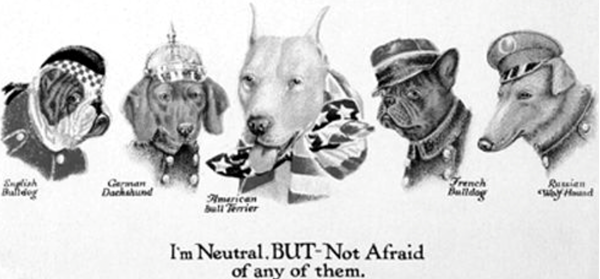
LT: Certainly people chose to express their patriotic allegiances through their choice of dog. And and it was it was a bit of an issue for dachshunds and you can even see how it's all through, slightly branding and perhaps they tried to combat that so things like and the dachshund was for some renamed that ‘the badger dog’ which is more of a literal translation. And also what we know the German Shepherd became known as ‘Alsatians’ because it's a step away from its German roots with Alsace, bordering Germany. We’ve got pictures in the archives of things like - there's one of a schoolgirl with a little dachshund on a lead but on its tail there's a flag with the Union Jack on it and the caption is something like ‘taking no chances’.
[12:41] TT: I think those stories are wonderful. Was there anything … did they start some training, when the Americans arrived. Were there any sort of themes of animals and, and how the Americans worked with them, or how they related to them. I don't know whether that becomes … so Uncle Sam is coming, an eagle I suppose would represent America.
LM: We’ve certainly got recruitment posters and other propaganda with the American bald eagle on and pictures of American soldiers with their own regimental mascots and pets and all sorts of creatures … you can think of the stereotypical … that would be American, but we've got pictures of doughboys with a coatimundi, which is … a bit like a raccoon. I don't know how that got on in the latter stages of the war.
I think they had a similar attitude to the British in terms of adopting creatures, great and small and the merits that came with that in terms of companionship.
[13:36] TT: What about Australians and New Zealanders and even Indian troops, did they have a relationship with animals that was picked up in the press and … commented on.
LM: We do have a picture of an Aussie soldier with a kangaroo on a chain. So again, it was like I suppose that of psychologically tying in your mascot with your national identity and the the Canadians - the regiments had several black bears, which funnily enough ended up in London Zoo … during and after the war because as your bear cub gets bigger it becomes slightly more unmanageable on the front lines.
And in fact, it's believed that Winnie the Pooh, the bearer of Christopher Robin, A A Milne’s son, was in part inspired by a bear called Winnie, that came to live at London Zoo. That was originally a mascot of the Canadians true - the bear took its name from I think it was Winnipeg in Canada.
[14:30] TT: … I was also wondering how wildlife was portrayed in the trenches - because, the reason being, there's a number of accounts I've got of people being engaged in battle, but also noticing how larks and other birds are still going about their everyday business.
LM: Yes, that’s certainly a bit of a recurring theme. Like you say, it's … the stark contrast of Nature's ‘business as usual’ continuing whilst man is at war - and even things like, migrating birds, and plant life and things like that returning did feature in the press quite a lot in a way that you would perhaps not expect. You’d think perhaps the thrust of the public interest would be on troop movements and that kind of thing but there was a surprising amount of material on particularly birdlife in fact on the front lines that you perhaps wouldn't anticipate. There was one one feature I remember coming across that had pictures of swans that had survived shell and shot as they described it. So there was an awareness that there were wild animals on the front lines that were swept up in the conflict that really had no place there but were … carrying on regardless.
I've ... read extracts from diaries, quite poignantly written where they, or a soldier or, and his regiment or wherever it is sheltering say in woodland, and noticing the bird song, or the flowers or something, which is a complete contrast and quite alien to the violence that is surrounding them.
[15:53] TT: Finally, where can people get your book from?
LM: It's available from the Pen & Sword website > https://www.pen-and-sword.co.uk/ and it's also on sale on Amazon as well.
TT: Thank you very much.
LM: It's been a pleasure.
Further Reading and links:
Animal War Heroes by Peter Shaw Baker (AC&Black 1933)





